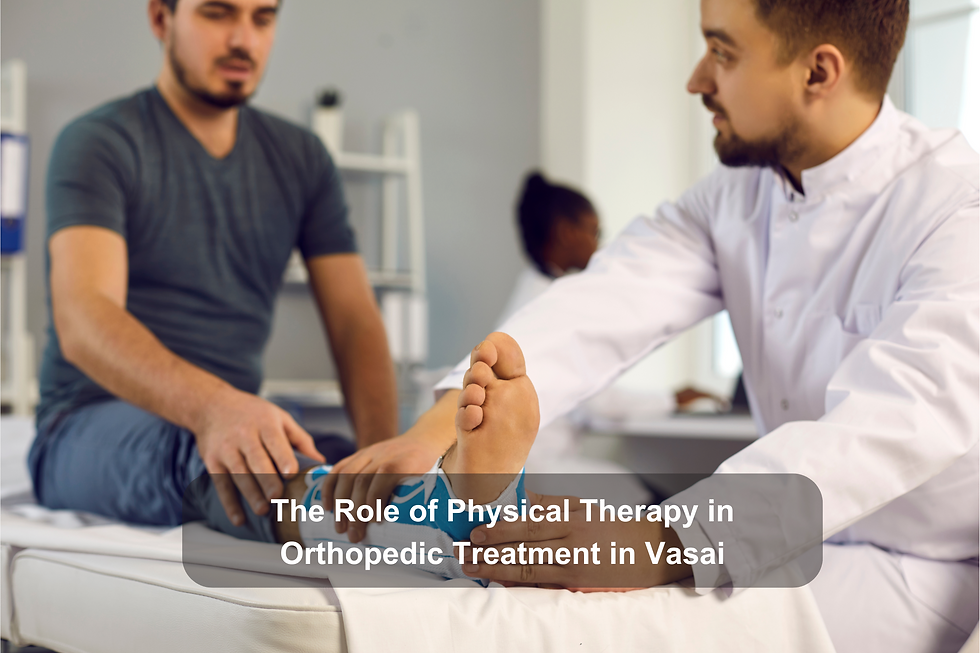The Surprising Connection Between Neck Pain and Posture
- onespine602
- Aug 17, 2024
- 4 min read

Neck pain is a common complaint that affects millions of people worldwide. Often dismissed as a minor inconvenience, it can escalate into a chronic condition that severely impacts daily life. What many people don't realize is that one of the most significant contributors to neck pain is poor posture. Whether you're sitting at a desk, using your smartphone, or even sleeping, the way you position your body can have a profound effect on your neck's health. If you've ever searched for a "neck specialist near me" or a "neck pain doctor near me," understanding the connection between neck pain and posture might just be the key to finding lasting relief.
Understanding the Anatomy of the Neck
The neck, also known as the cervical spine, is a delicate and intricate structure comprising seven vertebrae, muscles, ligaments, and nerves. It supports the weight of the head, which on average weighs about 10 to 12 pounds. The neck is designed to allow flexibility and a wide range of motion, but this flexibility also makes it susceptible to strain and injury.
When the head is positioned correctly—aligned with the spine—the cervical spine can easily support its weight. However, even slight deviations from this alignment can lead to increased stress on the neck's structures, resulting in discomfort or pain.
The Role of Posture in Neck Pain :
Posture plays a crucial role in maintaining the health and functionality of the neck. Good posture ensures that the spine is aligned, and the muscles, ligaments, and bones are working together to support the body without unnecessary strain. However, modern lifestyles often lead to poor posture habits, especially with the increased use of technology.
Forward Head Posture: One of the most common posture problems is forward head posture (FHP). This occurs when the head juts forward, placing additional strain on the neck muscles and cervical spine. FHP is often the result of prolonged sitting, particularly while working at a computer or using a smartphone. The further forward the head moves, the more the muscles and ligaments in the neck must work to hold it up, leading to muscle fatigue, tension, and eventually pain.
Text Neck Syndrome: A related condition is "text neck," which refers to the neck pain and damage sustained from looking down at your phone, tablet, or other devices for extended periods. The downward angle at which the head is held increases the weight and strain on the cervical spine. Over time, this can lead to chronic pain, stiffness, and even structural changes in the neck.
Slouched Sitting: Slouching while sitting, whether at a desk or on the couch, can also contribute to neck pain. When you slouch, the natural curve of your spine is altered, causing the muscles in your neck and upper back to work harder to support the head. This added strain can lead to muscle imbalances and discomfort.
The Impact of Poor Posture on Overall Health :
Beyond neck pain, poor posture can have far-reaching effects on your overall health. It can lead to headaches, shoulder pain, and even lower back pain as the spine and muscles throughout the body are forced to compensate for misalignment. Additionally, poor posture can negatively impact breathing, digestion, and mood, as the body's systems are interconnected and influenced by how you carry yourself.
How to Improve Your Posture and Relieve Neck Pain :
If you're experiencing neck pain, improving your posture can make a significant difference. Here are some practical tips:
Mind Your Head Position: Keep your head aligned with your spine, with your ears directly over your shoulders. Avoid jutting your head forward or tilting it downward for extended periods.
Take Frequent Breaks: Whether you're working at a computer or using your smartphone, take breaks every 20-30 minutes to stretch and realign your posture. Consider using reminders or apps that prompt you to take a break.
Set Up an Ergonomic Workspace: Ensure your computer screen is at eye level, and your chair supports your lower back. Your feet should be flat on the floor, and your knees should be at a 90-degree angle. This setup helps maintain proper alignment and reduces strain on your neck and back.
Strengthen Your Core: A strong core supports good posture. Incorporate exercises that strengthen your abdominal and back muscles to improve your overall posture and reduce the risk of neck pain.
Stay Active: Regular exercise can help improve posture by strengthening the muscles that support the spine. Activities like yoga, Pilates, and swimming are particularly beneficial for promoting good posture and relieving neck tension.
Seek Professional Help: If you're struggling with chronic neck pain, it may be time to consult a professional. Searching for a "neck specialist near me" or a "neck pain doctor near me" can connect you with healthcare providers who specialize in diagnosing and treating neck pain. They can offer personalized advice, physical therapy, or other treatments to address the root cause of your discomfort.
Conclusion :
The connection between neck pain and posture is clear—how you position your body throughout the day has a direct impact on the health of your neck. By becoming more mindful of your posture and making small adjustments to your daily routine, you can prevent neck pain and promote overall well-being. If neck pain persists, don't hesitate to seek help from a specialist who can guide you on the path to recovery.
Thanks For Read


Comments